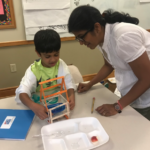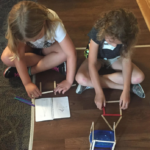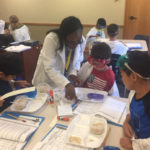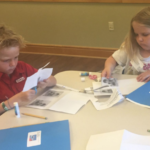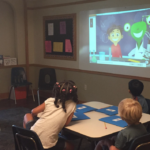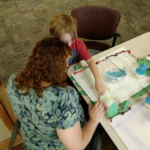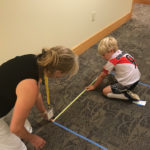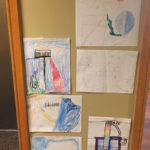Grade 1 Category
Summer SAVY 2018: Session 3, Day 1 – Engineering Solutions (Rising 1st)
Jun. 25, 2018—We had a wonderful first day. After getting to know each other, we began with a pre-assessment concept map on “System” to understand the pre-existing depth of knowledge our students have regarding the concept of system. This will help gauge what students already know and guide the course. Since we are designing solutions to problems...
Summer SAVY 2018: Session 2, Day 5 – Animal Adaptations (Rising 1st)
Jun. 22, 2018—Happy Last Day! Today was a very fun day for our young scientists. We would like to thank all the parents who were able to visit our classroom. The students spent the rest of their day reviewing what they had learned about food chains/webs, survive/thrive, and animal adaptations. For example, during one activity the students...
Summer SAVY 2018: Session 2, Day 4 – Animal Adaptations (Rising 1st)
Jun. 21, 2018—Happy Fourth Day! What a busy day for our zoologists! They began the day by using the Reasoning about a Situation or Event map to think through all the sides of the wild pigs’ problem. This was a difficult task because they were introduced to the advanced vocabulary of stakeholders, assumptions, point of view,...
Summer SAVY 2018: Session 2, Day 3 – Animal Adaptations (Rising 1st)
Jun. 20, 2018—Happy Third Day! Today our scientists continued to observe their mealworms and document how the mealworms are adapting to their habitats. They used millimeters to measure the mealworms and illustrated other developmental changes they observed. They discussed what their mealworms needed in order to survive and thrive in their environments. They also observed the adaptations...
Summer SAVY 2018: Session 2, Day 2 – Animal Adaptations (Rising 1st)
Jun. 19, 2018—Happy Second Day! Today the students continued their work toward earning their Scientific Investigator Certificate by thinking as scientists, particularly zoologists. Students began their day showing off their knowledge of change by illustrating five ways in which a tree could change. This led to a discussion about the meaning of life cycles. They learned that...
Summer SAVY 2018: Session 2, Day 1 – Animal Adaptations (Rising 1st)
Jun. 18, 2018—Happy First Day! My little scientists are digging deep into a life science unit on animals, their characteristics, and their environments. Today students were introduced to the six investigation processes (make observations, ask questions, learn more, design and conduct the experiment, create meaning, and tell others what was found) described in the Wheel of Scientific...
Summer SAVY 2018: Session 1, Day 5 – Dive into Design (Rising 1st)
Jun. 15, 2018—Hello Parents. It is hard to believe that this was our last day of Dive into Design. It has been a fast paced week of real life problem solving, with measurement. Today, students stepped back and reflected on their accomplishments this week, and they were very proud of themselves, as Miss Ashanti and I were...
Summer SAVY 2018: Session 1, Day 4 – Dive into Design (Rising 1st)
Jun. 14, 2018—Hello parents. Today we used yesterday’s investigation of measuring footsteps using non-standard measurement as a launching point to compare and contrast this form of measurement with standard units of measure. We accomplished this by conducting an evaluation of tools of measure to compare non-standard and standard measurements of three different pool model sizes that were...
Summer SAVY 2018: Session 1, Day 3 – Dive into Design (Rising 1st)
Jun. 13, 2018—Hello Parents, We opened our morning by adding to our classroom concept map on measurement. Students made great connections to our new learning by adding strands to categories of measurement such as how things are measured, dimensions, and accuracy in measurement. Next, students did an activity where they sorted objects into categories that they created...
Summer SAVY 2018: Session 1, Day 2 – Dive into Design (Rising 1st)
Jun. 12, 2018—Hello Parents. Today, we opened our morning by creating a Frayer’s chart to define what a model is, including, a class definition, what a model is, examples and non-examples. To do this, each student was given a picture of something and they had to decide if what they had was an example of a model...

